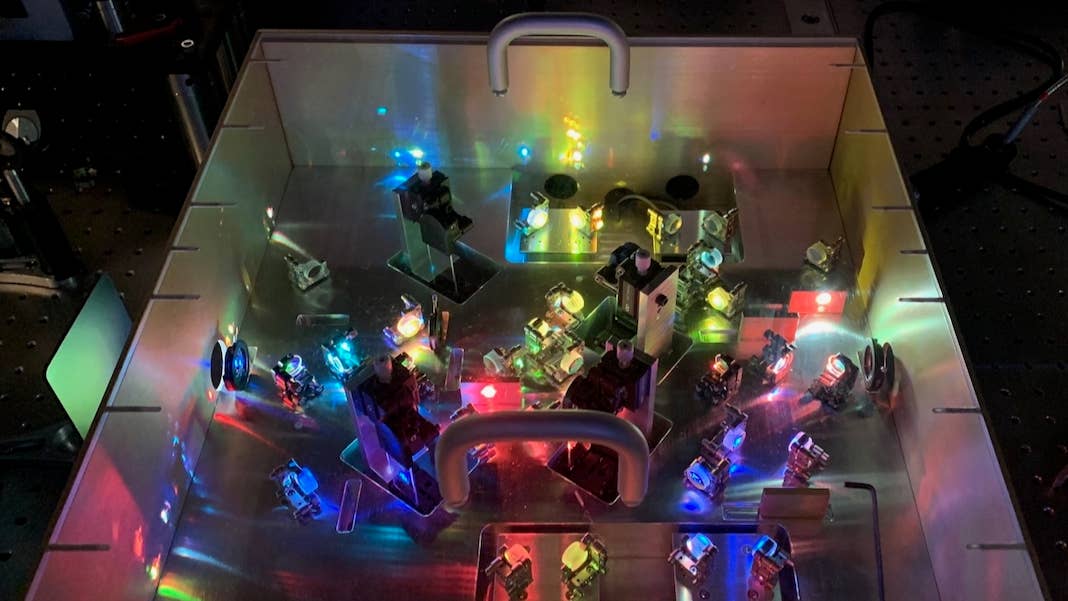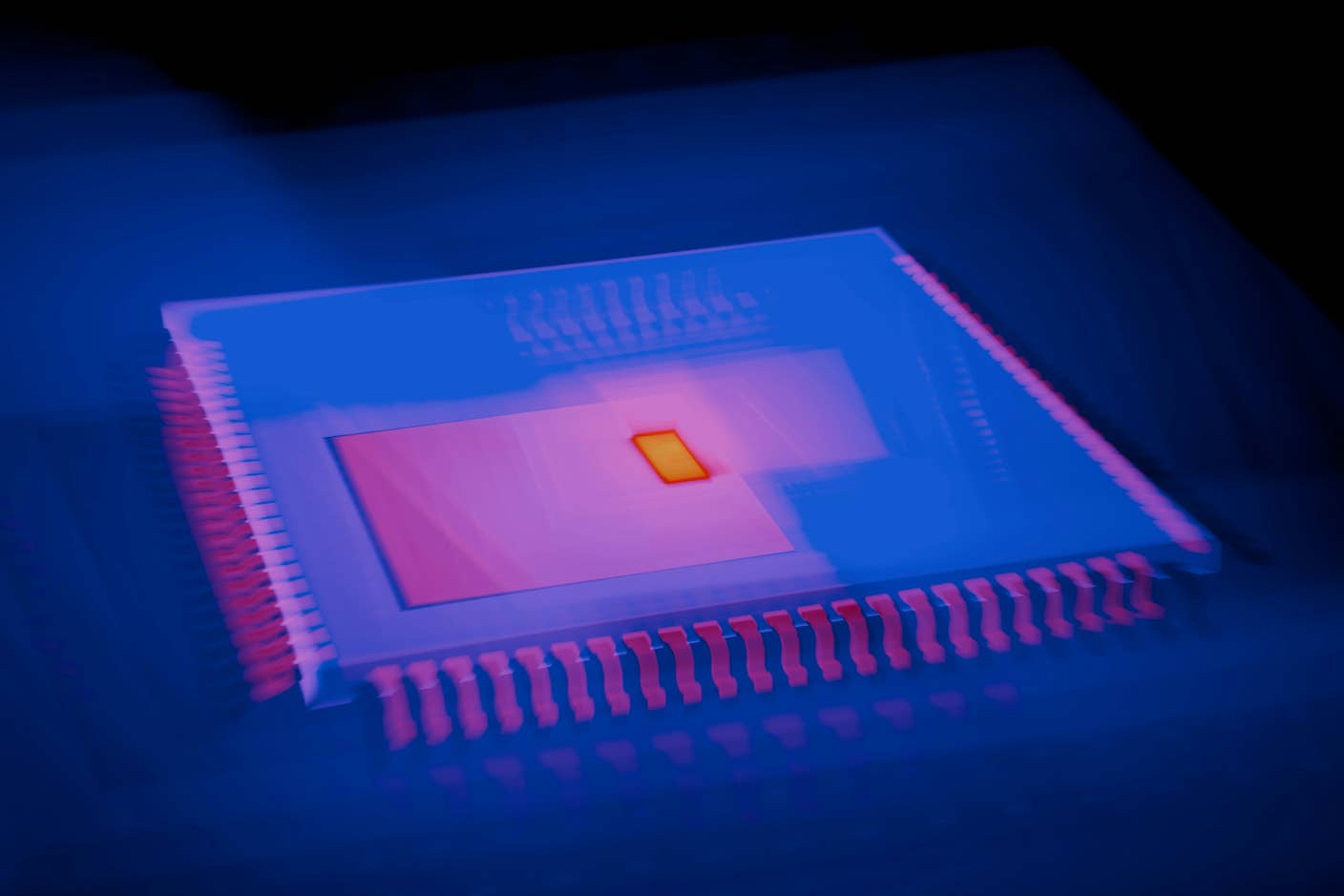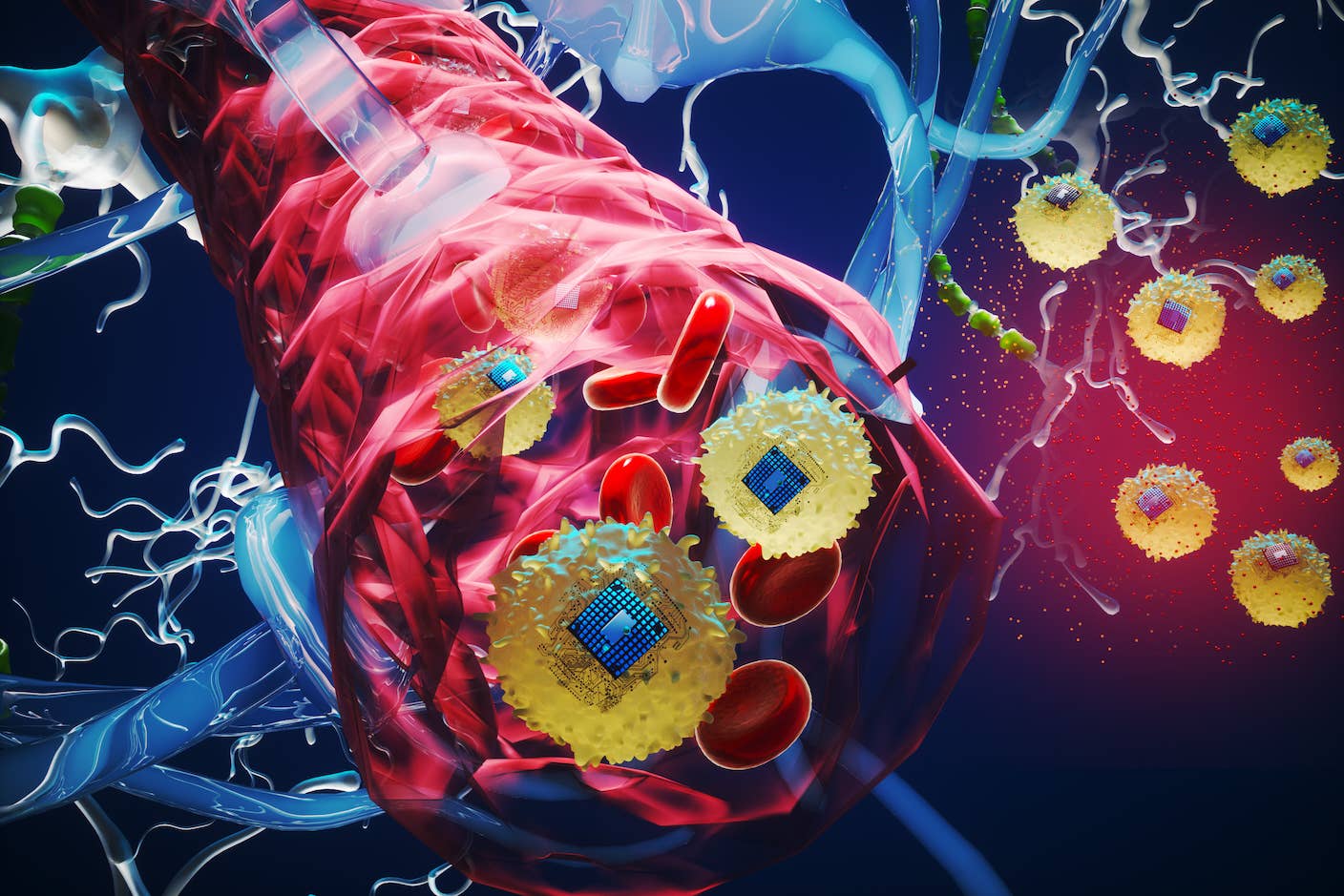The Digital Future May Rely on Optical Switches a Million Times Faster Than Today’s Transistors

Share
If you’ve ever wished you had a faster phone, computer, or internet connection, you’ve encountered the personal experience of hitting a limit of technology. But there might be help on the way.
Over the past several decades, scientists and engineers like me have worked to develop faster transistors, the electronic components underlying modern electronic and digital communications technologies. These efforts have been based on a category of materials called semiconductors that have special electrical properties. Silicon is perhaps the best known example of this type of material.
But about a decade ago, scientific efforts hit the speed limit of semiconductor-based transistors. Researchers simply can’t make electrons move faster through these materials. One way engineers are trying to address the speed limits inherent in moving a current through silicon is to design shorter physical circuits—essentially giving electrons less distance to travel. Increasing the computing power of a chip comes down to increasing the number of transistors. However, even if researchers are able to get transistors to be very small, they won’t be fast enough for the faster processing and data transfer speeds people and businesses will need.
My research group’s work aims to develop faster ways to move data, using ultrafast laser pulses in free space and optical fiber. The laser light travels through optical fiber with almost no loss and with a very low level of noise.
In our most recent study, published in February 2023 in Science Advances, we took a step toward that, demonstrating that it’s possible to use laser-based systems equipped with optical transistors, which depend on photons rather than voltage to move electrons, and to transfer information much more quickly than current systems—and do so more effectively than previously reported optical switches.
Ultrafast Optical Transistors
At their most fundamental level, digital transmissions involve a signal switching on and off to represent ones and zeros. Electronic transistors use voltage to send this signal: When the voltage induces the electrons to flow through the system, they signal a 1; when there are no electrons flowing, that signals a 0. This requires a source to emit the electrons and a receiver to detect them.
Our system of ultrafast optical data transmission is based on light rather than voltage. Our research group is one of many working with optical communication at the transistor level—the building blocks of modern processors—to get around the current limitations with silicon.
Our system controls reflected light to transmit information. When light shines on a piece of glass, most of it passes through, though a little bit might reflect. That is what you experience as glare when driving toward sunlight or looking through a window.
We use two laser beams transmitted from two sources passing through the same piece of glass. One beam is constant, but its transmission through the glass is controlled by the second beam. By using the second beam to shift the properties of the glass from transparent to reflective, we can start and stop the transmission of the constant beam, switching the optical signal from on to off and back again very quickly.
With this method, we can switch the glass properties much more quickly than current systems can send electrons. So we can send many more on and off signals—zeros and ones—in less time.
Be Part of the Future
Sign up to receive top stories about groundbreaking technologies and visionary thinkers from SingularityHub.


How Fast Are We Talking?
Our study took the first step to transmitting data 1 million times faster than if we had used the typical electronics. With electrons, the maximum speed for transmitting data is a nanosecond, one-billionth of a second, which is very fast. But the optical switch we constructed was able to transmit data a million times faster, which took just a few hundred attoseconds.
We were also able to transmit those signals securely so that an attacker who tried to intercept or modify the messages would fail or be detected.
Using a laser beam to carry a signal, and adjusting its signal intensity with glass controlled by another laser beam, means the information can travel not only more quickly but also much greater distances.
For instance, the James Webb Space Telescope recently transmitted stunning images from far out in space. These pictures were transferred as data from the telescope to the base station on Earth at a rate of one “on” or “off” every 35 nanoseconds using optical communications.
A laser system like the one we’re developing could speed up the transfer rate a billion-fold, allowing faster and clearer exploration of deep space, more quickly revealing the universe’s secrets. And someday computers themselves might run on light.
This article is republished from The Conversation under a Creative Commons license. Read the original article.
Image Credit: The author’s lab’s ultrafast optical switch in action. Mohammed Hassan, University of Arizona, CC BY-ND
Mohammed Hassan is an associate professor of physics and optical sciences at The University of Arizona (UA). He has 13 years of experience in the attosecond physics and ultrafast electron microscopy and imaging research fields. He earned his PhD from the Max-Planck Institute for Quantum Optics. He joined Prof. Ahmed H. Zewail’s group at Caltech as a postdoctoral scholar through 2017. Earlier in his career, Dr. Hassan developed the light field synthesizer to generate the first optical attosecond pulse, the shortest light pulse documented in the Guinness World Records. Exploiting this tool, he measured the time an electron takes to respond and move. His breakthroughs have been published in high-profile journals. He is currently well-known in his field of attosecond physics for developing attosecond electron microscopy (attomicroscopy), a camera that will film the electron motion in action. He used this tool to image the electron motion in the solid state. This electron imaging opens a new era in ultrafast electron imaging and will lead to many breakthroughs and high-impact scientific achievements. Attomicroscopy imaging opens a new window to the quantum world. Recently, he has granted a patent for his attomicroscopy camera. Furthermore, he established a new methodology to sample the light field of ultrafast laser pulses and a new methodology to measure the electronic delay response in the neutral matter. Also, he demonstrated the attosecond optical switch and the capability to encode data on ultrafast laser pulses, which paves the way to establish attosecond and femtosecond optoelectronics working at petahertz speeds. Hassan received the international Max-Planck fellowship in 2009. He received the Air Force Young Investigator Award (YIP) in 2019. Hassan also received many prestigious awards for his attomicroscopy project from the Gordon and Betty Moore Foundation 2018, the WM Keck Foundation 2019, and recently the inaugural AFOSR Director’s Research Initiative (DRI) Award 2022. Moreover, he was awarded 2022 Historically Black Colleges and Universities and Minority-Serving Institutions (HBCUs/MSIs) for his institute.
Related Articles

This Light-Powered AI Chip Is 100x Faster Than a Top Nvidia GPU

How Scientists Are Growing Computers From Human Brain Cells—and Why They Want to Keep Doing It

These Brain Implants Are Smaller Than Cells and Can Be Injected Into Veins
What we’re reading
